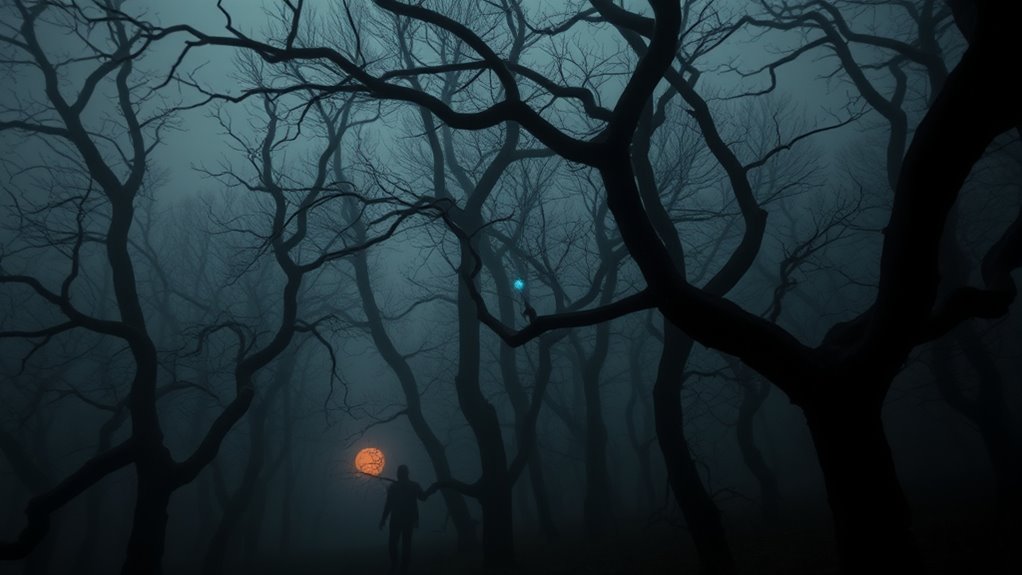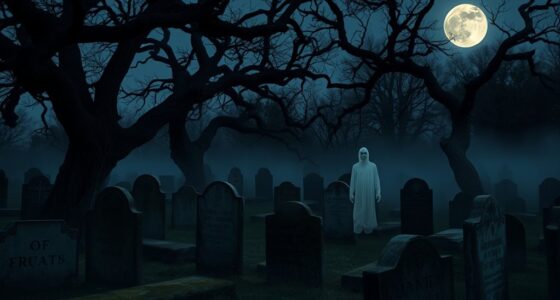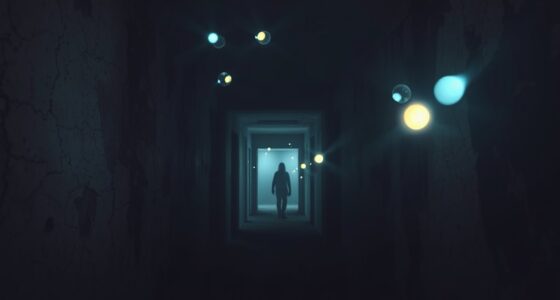You might think hauntings only happen after tragic deaths, but that’s not true. Places can become haunted through emotional residues, unexpected shocks, or cultural significance that leaves a lasting impression. Even natural settings or sites with positive histories can seem haunted due to natural sounds, environmental factors, or personal connections. If you’re curious, you’ll discover how hauntings stem from more than just tragedy and what truly makes a place feel haunted.
Key Takeaways
- Haunted places can stem from residual energy or emotional attachments, not just tragic deaths.
- Unresolved emotions and memories linked to a location can create perceived hauntings.
- Sudden shocks or unexpected events, regardless of tragedy, can leave lasting impressions.
- Cultural stories, urban legends, and media dramatization influence perceptions beyond tragic origins.
- Natural environmental factors and psychological triggers can produce hauntings unrelated to tragedy.
The Myth of Tragedy as the Only Trigger for Hauntings
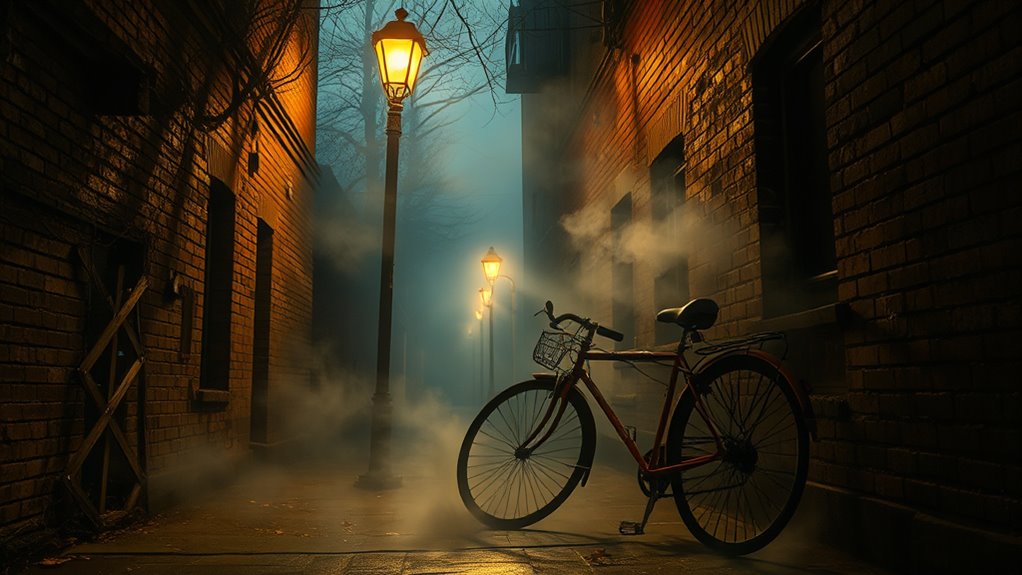
Many people believe that only tragic events, like deaths or accidents, can cause a place to become haunted. However, this isn’t entirely true. Many haunted locations have supernatural origins rooted in spiritual disturbances that aren’t linked to tragedy. These disturbances can stem from a variety of sources, such as residual energy from intense emotions or unexplained phenomena. Sometimes, a place becomes haunted because of its history or the presence of entities that aren’t connected to any specific tragedy. Believing that only tragic events cause hauntings limits your understanding of the supernatural. In reality, spiritual disturbances can happen for many reasons, and they don’t always involve tragedy. Haunted places can be just as affected by unseen forces without any tragic backstory.
Emotional Residue and Unfinished Business

Unresolved emotions and unfinished business often linger in a locale long after the events that caused them have passed, creating a powerful energetic imprint. These emotional residues can fuel supernatural legends and ghost stories, making a place feel haunted even without tragedy. When someone leaves behind unresolved feelings—regrets, anger, or longing—they leave a trace that spirits or energies can attach to. This lingering energy can manifest as apparitions, strange noises, or unexplained sensations, reinforcing the idea that a place is haunted. Many ghost stories focus on these emotional remnants, emphasizing that hauntings aren’t always tied to violent deaths. Instead, they stem from the emotional weight of unfinished business, which keeps a location alive in the spiritual domain long after the physical presence is gone. Recognizing soulmate angel numbers can also be a sign that emotional connections and unresolved feelings are influencing the energy of a place. Additionally, understanding the concept of skincare patches highlights how targeted interventions can address specific issues, much like how addressing emotional residuals can clear the energetic imprints that cause hauntings. These emotional residues can persist over time, creating a long-lasting connection that sustains the haunting. Sometimes, the physical environment itself can trap or reflect these lingering energies, making location-based energies an important aspect to consider. Recognizing the role of emotional energy in these phenomena can help demystify many ghost stories and guide those seeking closure.
Sudden Shocks and Unexpected Events
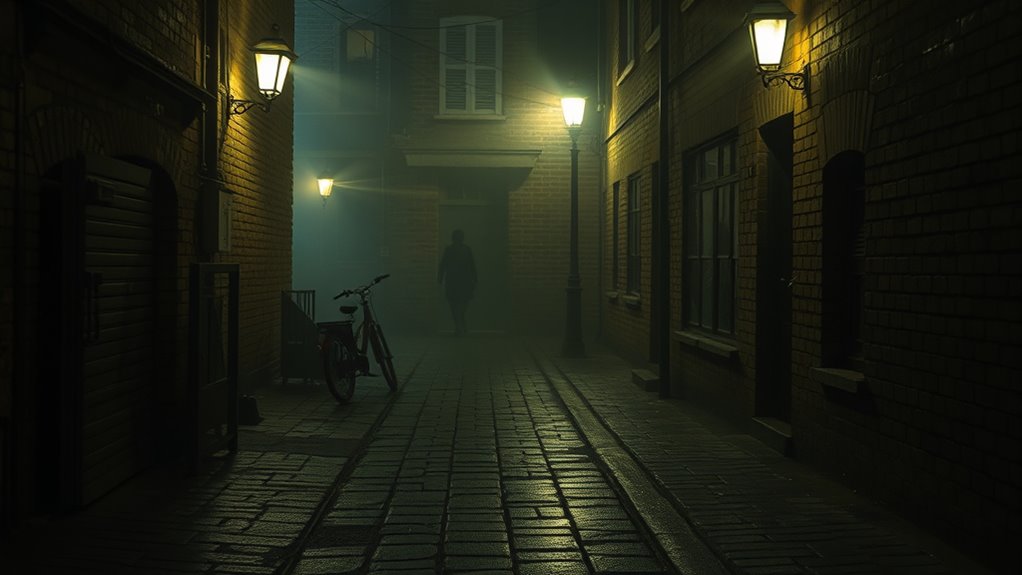
Unexpected tragedies can strike at any moment, catching everyone off guard. These sudden events often leave deep impressions on those who witness or experience them. It’s these shocking incidents that tend to shape how haunted places are perceived and remembered. Incorporating collective positive energy can sometimes influence the emotional resonance of a location and its history. Additionally, understanding the types of paint sprayers and their proper application can help prevent accidents during renovation or maintenance projects, which are sometimes linked to local legends. Recognizing the role of emotional resonance can help understand how perceptions of haunted sites are formed and sustained. The integration of email marketing tools can also be utilized by communities or organizations to share stories and influence collective perceptions, thereby shaping the haunted reputation of certain locations. Understanding the power of perception is crucial, as it highlights how collective beliefs and emotions contribute to the haunting narratives associated with various places.
Unexpected Tragedies Strike Anytime
Sudden tragedies can strike even in the most supposedly peaceful or haunted locations, catching visitors off guard and leaving lasting impressions. These unexpected events often reinforce supernatural legends, fueling stories that make a place more intriguing for haunted tourism. You might visit a serene estate or an old inn, only to encounter an unforeseen tragedy that changes your perception instantly. Such incidents remind us that evil spirits or restless souls aren’t always confined to violent pasts; sometimes, tragedy strikes without warning, creating new hauntings and legends. These moments are powerful, shaping the history and mythos of haunted places. They serve as a reminder that any location, no matter how tranquil, can become haunted through sudden tragedy, making every visit unpredictable and chilling.
Sudden Events Leave Lasting Impressions
Even in places known for their eerie tranquility, a shocking event can leave an indelible mark on visitors’ minds. Sudden events—like mysterious noises or inexplicable sightings—often fuel urban legends and ghost stories that persist for generations. These unexpected shocks make locations feel haunted, even if no tragedy occurred there. A quick, jarring experience can imprint itself deeply, convincing you that something unseen is watching. Such moments disrupt the calm and create lasting impressions, transforming ordinary places into sites of speculation. The power of these surprises lies in their unpredictability, making them perfect stories for ghost tales. Over time, these incidents become woven into the local lore, perpetuating the idea that sudden, unexplainable events can turn any place into a haunted spot. The psychological impact of unexpected shocks can intensify these perceptions, reinforcing beliefs that such places are inherently haunted. Additionally, the unexpected nature of these events often triggers a strong emotional response, making the experience even more memorable. Furthermore, the human tendency to seek patterns can lead observers to interpret random occurrences as meaningful, deepening the haunted impression. Moreover, understanding the psychology of fear helps explain why these moments have such a lasting effect on witnesses. Recognizing that the contrast ratio influences how vividly these experiences are perceived can shed light on why some sights seem more startling than others.
Shocking Incidents Shape Haunted Perceptions
When a shock disrupts the quiet of a seemingly peaceful place, it can dramatically alter how you perceive the environment. Sudden, unexpected events often leave lasting impressions, fueling haunted perceptions. Supernatural theories suggest these shocks are evidence of spirits or energies disturbed by the incident, but psychological influences also play a significant role. Your mind may interpret the unexpected as supernatural, especially if the event triggers fear or trauma. These shocking incidents can make a place seem haunted long after the event, reinforcing the idea that something supernatural is at play. Interestingly, juice cleansing practices have been linked to heightened awareness of bodily sensations and emotional responses, which can also influence perceptions of strange or eerie experiences. Whether rooted in supernatural explanations or psychological responses, such surprises shape how you view a location, transforming ordinary spaces into places charged with eerie significance.
Collective Memories and Cultural Significance
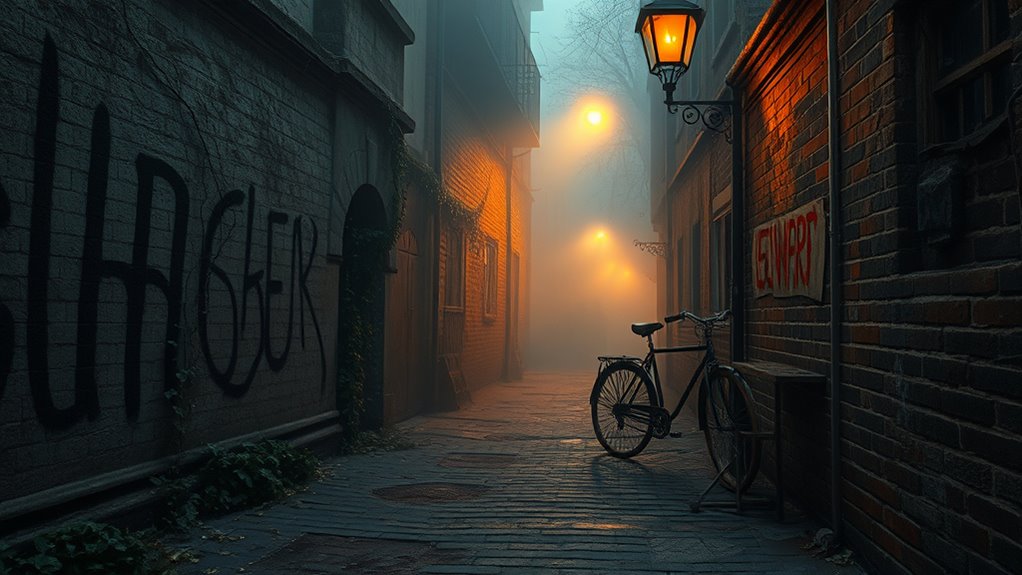
Haunted places often hold deep cultural significance because they embody collective memories that shape community identities. These stories are passed down through generations, becoming part of local traditions. Urban legends play a key role, transforming sporadic incidents into shared narratives that reinforce a place’s haunted reputation. Media influence amplifies this effect, as movies, TV shows, and news coverage dramatize these stories, embedding them further into public consciousness. When a location is associated with tragedy or ghostly activity, it becomes a symbol of collective memory—reminding communities of their history and fears. This cultural significance guarantees that even places without tragic origins can become haunted in the public eye, driven by stories that grow richer and more influential with each retelling.
Places With Positive or Neutral Histories
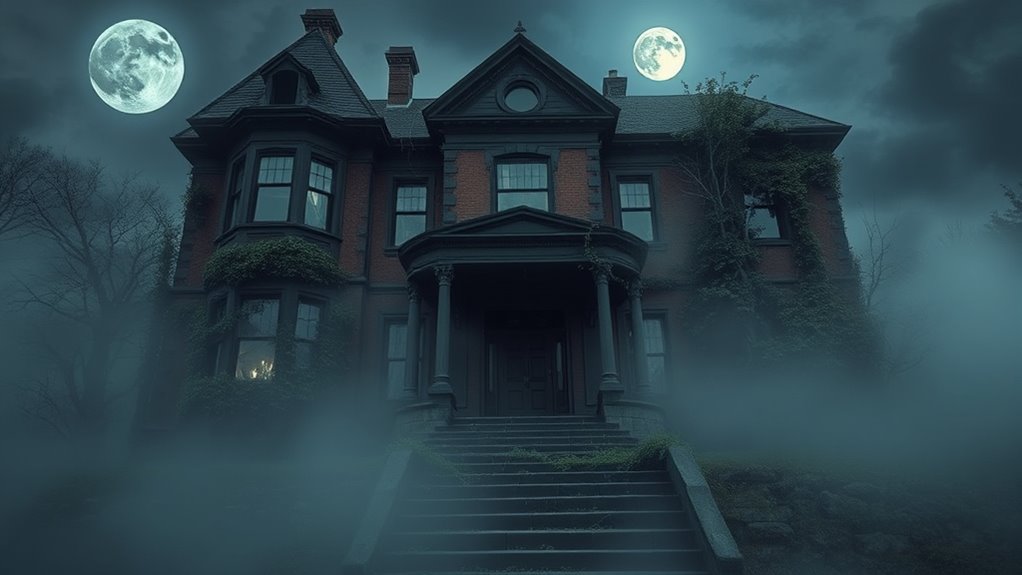
You might find that some places are known for celebrated historic events or famous cultural landmarks rather than ghost stories. These sites often have peaceful natural settings that invite reflection and appreciation. Exploring their positive or neutral histories can offer a different perspective on what makes a place special.
Celebrated Historic Events
Celebrated historic events have left their mark on many places around the world, offering visitors a chance to connect with positive or neutral moments in history. These sites often attract ghostly tourism, where people visit to experience the lingering energy of significant events. Haunted architecture, such as historic theaters, castles, and old government buildings, sometimes draws curiosity because of its rich past. You might find that these locations are not haunted by tragedy but by the stories of triumph, innovation, or cultural celebration. Their preserved structures and stories invite respectful exploration, making them ideal for those interested in history without the darkness associated with tragedy. Visiting such places provides a meaningful way to appreciate the history that shaped communities and nations.
Famous Cultural Landmarks
Many of the world’s most famous cultural landmarks stand as symbols of positive history and shared human achievements. These sites often inspire stories rooted in supernatural folklore and ghostly legends, adding a layer of mystique without overshadowing their significance. For example, iconic monuments like the Eiffel Tower or the Taj Mahal are associated with tales of spiritual presence or protective spirits, often reflecting local beliefs and traditions. These legends highlight that even places celebrated for their beauty or cultural importance can be seen as haunted in a benign way. Their histories are often filled with stories of reverence and wonder, making them compelling destinations for those interested in the supernatural. Instead of fear, these ghostly legends evoke curiosity and respect for the rich, positive histories they embody.
Peaceful Natural Settings
Peaceful natural settings often evoke a sense of calm and serenity, making them ideal places to connect with nature’s positive energy. Yet, even tranquil spots aren’t immune to ghost stories and urban legends. You might hear whispers of spirits lingering in quiet forests or beside peaceful lakes, despite their reputation for tranquility. These places often have neutral histories, with no tragic events, but their serenity fuels local legends of gentle apparitions or protective spirits. Sometimes, hikers or visitors report feeling a comforting presence rather than fear. These stories remind us that any place can become haunted, not just those with tragic pasts. Nature’s peaceful settings can serve as gentle reminders that spirits, if they exist, might simply be guardians of the land’s positive energy.
Nature and Environmental Factors
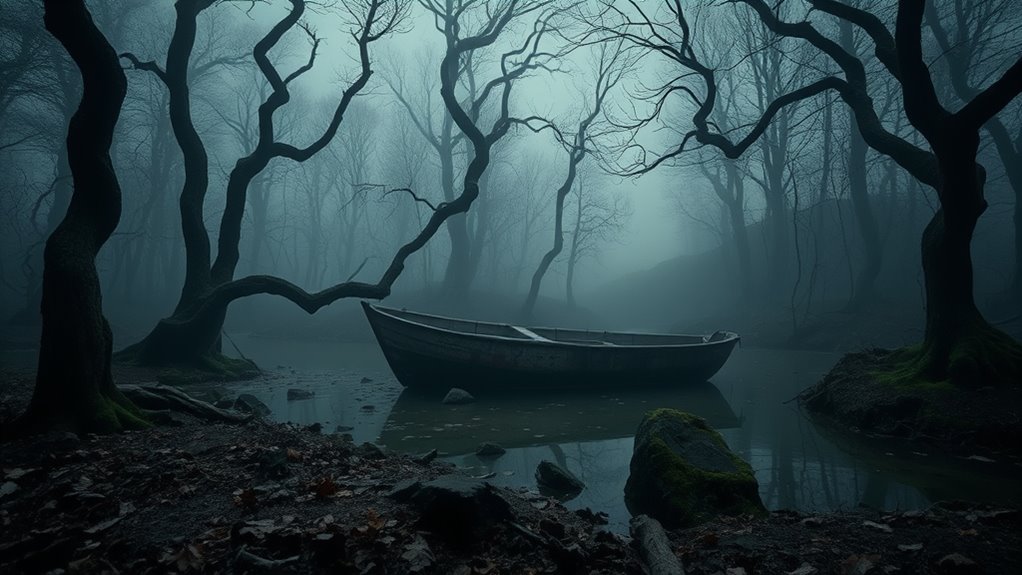
Environmental factors often play a significant role in shaping haunted places, as natural elements can influence the atmosphere and perception of eerie occurrences. For example, the presence of wild animals can create unsettling sounds or sudden movements that heighten fear and suspicion. Natural disasters like storms, earthquakes, or floods can leave behind a sense of chaos and destruction, making locations feel haunted even without tragic deaths. These events can stir echoes of past turmoil, making the environment seem alive with unseen energy. Shadows cast by weathered trees or the eerie silence after a storm can evoke a haunting mood. You might find yourself feeling uneasy in places where nature’s power has recently been released, reinforcing the idea that the environment itself can be a source of haunted experiences.
Personal Connections and Residences
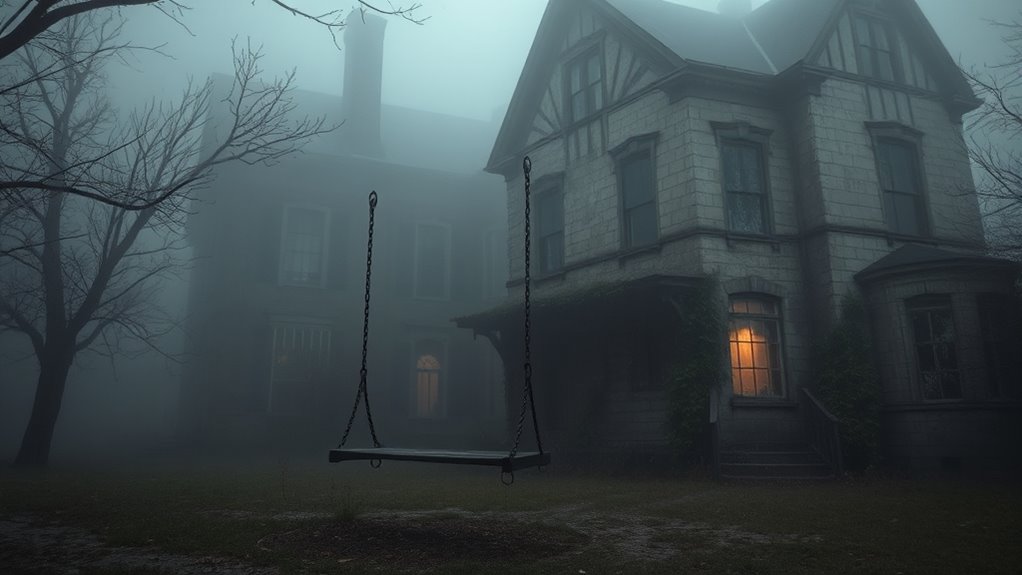
Your personal connections to a place can considerably shape its haunted reputation. When you’ve experienced or heard stories about ghostly apparitions in your home, it heightens the sense of paranormal activity. Places tied to loved ones or tragic events often feel more haunted because your emotions and memories amplify the atmosphere. For example:
| Connection Type | Example | Impact on Haunted Reputation |
|---|---|---|
| Family Heritage | An ancestral home | Increases belief in ghostly apparitions |
| Tragic Losses | Sudden death in residence | Fuels stories of paranormal activity |
| Emotional Ties | Memories with loved ones | Heightens perceived hauntings |
| Personal Experiences | Unexplained noises or sightings | Reinforces the haunted narrative |
These connections make a place feel more alive with ghostly activity, blending emotion with the supernatural.
The Role of Human Imagination and Perception
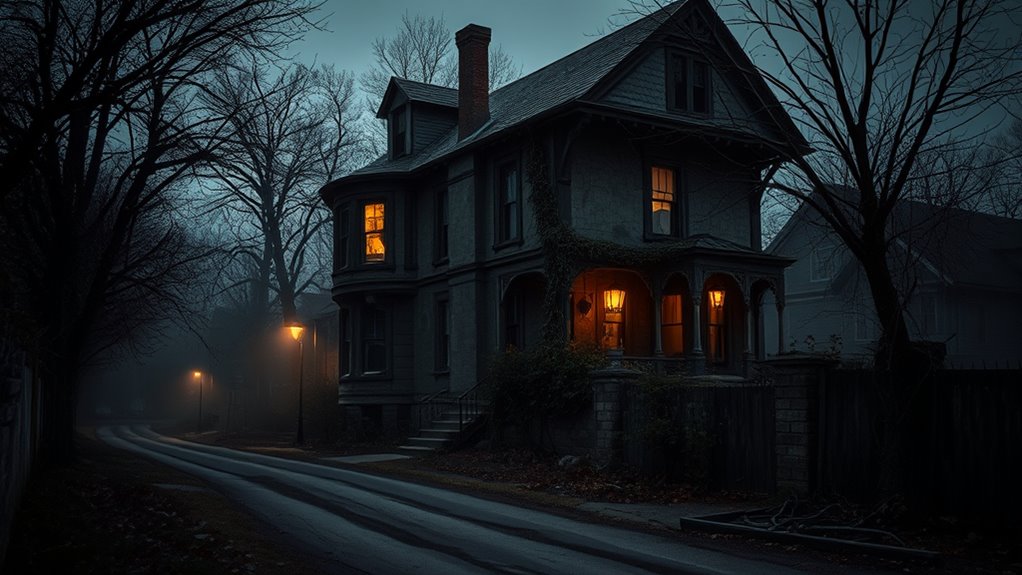
Have you ever wondered how much of what you perceive as haunted might be shaped by your own mind? Your beliefs about the supernatural influence how you interpret strange sounds or flickering lights. If you hold supernatural beliefs, you’re more likely to see ghost stories as evidence of spirits rather than natural causes. Perception plays a vital role in shaping your experience; your expectations can turn ambiguous stimuli into haunting encounters. The mind fills in gaps based on cultural stories and personal fears, making places seem more haunted than they are. This active imagination can create a vivid sense of presence, even without real supernatural activity. Ultimately, your perception and preconceptions heavily influence whether a place feels haunted or simply ordinary.
Frequently Asked Questions
Can Modern Technology Detect or Verify Haunted Locations?
Modern technology, like EVP technology, plays a big role in ghost hunting by attempting to detect spirits or paranormal activity. While it can’t definitively verify haunted locations, it can provide intriguing evidence for enthusiasts. You can use these tools during ghost hunting to capture potential electronic voice phenomena and explore eerie places. Remember, technology offers clues but doesn’t guarantee proof—it’s all about your interpretation and the experience you have there.
Do Animals Perceive Spirits or Hauntings Differently Than Humans?
Imagine animals sensing a gentle whisper from the beyond; their perception of spirit awareness might be different from ours. You’ll find that animal perception often involves heightened senses, allowing them to detect subtle energies humans might miss. While they may not understand spirits as humans do, many believe animals are more attuned to the unseen, experiencing hauntings in their own unique way. Their intuition often reveals a deeper connection to the spiritual domain.
Are There Specific Architectural Features Linked to Hauntings?
You might notice that certain architectural features are linked to hauntings, as architectural symbolism often influences the atmosphere of a space. For example, elaborate archways or creaky floorboards can evoke feelings of mystery. Additionally, historical building materials like aged wood or stone can carry residual energy. These elements can make a place feel more haunted, as they contribute to the overall ambiance and emotional resonance that many believe attracts spirits.
How Do Different Cultures Interpret and Explain Hauntings?
You see, different cultures interpret and explain hauntings through their unique cultural beliefs and historical narratives. For example, some cultures see spirits as ancestors watching over them, while others believe ghosts are unsettled souls seeking closure. These varied ideas shape how people perceive haunted places, making the experience deeply personal and culturally specific. Your understanding of hauntings depends on these collective beliefs and stories that have been passed down through generations.
Can Environmental Pollutants Influence Perceptions of Paranormal Activity?
You might not realize that pollution perception and environmental influence can shape your experiences of paranormal activity. Exposure to certain pollutants or toxins can alter your mental state, making you more sensitive to eerie sensations or hallucinations. These environmental factors can heighten your perception of hauntings, causing you to interpret normal stimuli as supernatural. So, your surroundings and the level of pollution perception directly impact how you perceive and experience paranormal phenomena.
Conclusion
You realize that haunted places aren’t just born from tragedy—they’re woven from stories, memories, and the echoes of human emotion. As you walk through these spaces, imagine the whispers of unfinished business, the flicker of collective memories, and the gentle sway of nature’s unseen forces. Every place holds a unique history, alive with unseen energy that stirs the air, reminding you that haunted origins are as varied and layered as the shadows dancing in the dim light.
